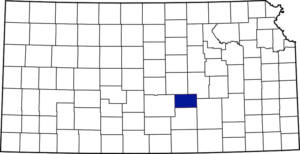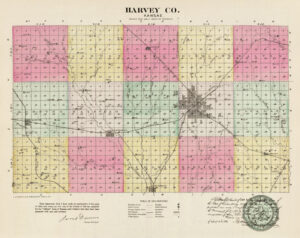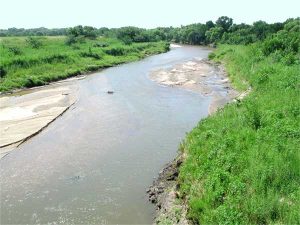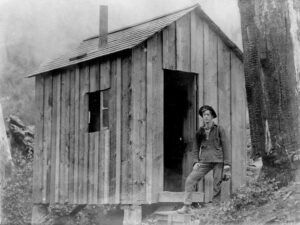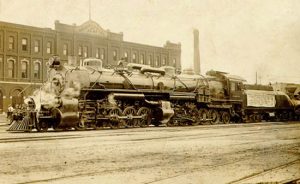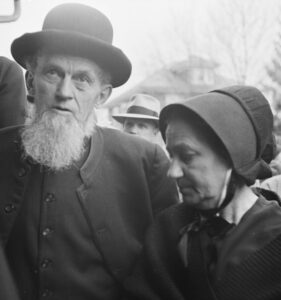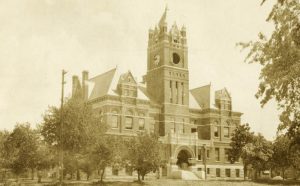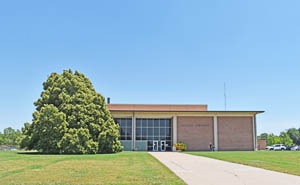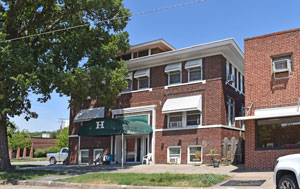Towns & Places:
Burrton
Halstead
Hesston/Elivon
Newton – County Seat
North Newton/Bethel College
Sedgwick
Walton
Bethel College
Hesston College
Harvey County, Kansas, was founded in 1872 and named in honor of the fifth Governor of Kansas, James M. Harvey. Located in the south-central part of the state, the county’s population as of the 2020 census was 34,024. Newton is its county seat and the most populous city.
It is the third county north of the Oklahoma line and the sixth from the State of Missouri. It is bounded on the north by McPherson and Marion Counties, on the east by Marion and Butler, on the south by Sedgwick, and the west by Reno County. The county has a total area of 541 square miles, of which 540 square miles is land and one square mile is water. The Little Arkansas River flows through the county.
The general surface of the county is prairie, with sand hills in the extreme northwest and somewhat rolling in the southeast. It has an unusual abundance of streams, and its water system consists of the Little Arkansas River and numerous branches. The Little Arkansas River enters in the northwest corner and flows east a few miles, where Crooked Creek and other streams join it. From this point, it flows southeast, joined at different points by Black Kettle, Emma, and Sand Creeks. Jester and West Creeks are in the eastern part of the county. In the early days of settlement, the bottom lands along the streams averaged from one-fourth to three-fourths of a mile in width and comprised 30 percent of the area, which was above the average in Kansas and made it a fine farming district. The timber belts were from a few rods to one-fourth of a mile in width and contained several varieties of wood — walnut, cottonwood, elm, hackberry, ash, elm, box-elder, mulberry, and sycamore.
Magnesian limestone was found in limited quantities in the northeast, and clay of good quality for brick was found near Newton. Gypsum abounded in the eastern portion, and salt was found in large quantities underlying the southeastern section.
The first settler in the county was H. Nieman, who came in 1869. Walter M. Munch, William Lawrence, Hubbard Wilcox, William McOwen, Charles Schaefer, John N. Corgan, W. T. Wetherel, John Wright, and S. Decker followed him in the same year. About 60 new settlers came the following year. In the fall of that year, agitation for organizing a new county brought about a division in the Republican Party in Sedgwick County. The delegates from Newton, at that time in Sedgwick County, were cut down in the convention from 7 to 3. This caused the whole delegation and those from Black Kettle and Grant townships to withdraw. They nominated a separate ticket, which was partially elected.
In December of that year, a convention was held at Newton to arrange plans for a separate organization. The plan of taking three townships from McPherson, three from Marion, and ten from Sedgwick County, with Newton as the county seat, was adopted by those present and was carried into effect by an act of the legislature a few weeks later. Governor James Harvey appointed the following officers to serve temporarily: Clerk, W. H. Daily; treasurer, C. D. Munger; probate judge, A. Markwell; register of deeds, R. H. Brown; sheriff, W. B. Chamberlain; coroner, C. C. Furley; county attorney, C. S. Bowman; clerk of the district court, J. B. Cunningham; county surveyor, W. Brown; superintendent of public instruction, Ellen Webster; county commissioners, A. G. Richardson, Amos Prouty, and J. R. Skinner.
The first election was held in May 1872. Newton was made the county seat, and all the officers appointed by the governor were elected except for J. R. Skinner, county commissioner, whose place was filled by B. Thompson. The first act of the commissioners was to divide the county into civil townships. Each one was made the size of a Congressional township, and they were: Alta, Burrington, Darlington, Emma, Garden, Halstead, Lake, Lakin, Macon, Newton, Pleasant, Richlaud, and Sedgwick. On a petition signed by three-fourths of the citizens in the townships of Highland and Walton, they were added to Harvey County by an act of the legislature in March 1873.
From the time of organization until the fall of 1875. the county affairs were said to have been very badly, if not criminally, managed. No records of the officers’ transactions were kept; even the minutes of the commissioners’ meetings were omitted, and most of the important papers that should have been on file were missing. It was charged that large amounts of money had been wrongly used, and warrants were paid without legal sanction. Indignation meetings were held all over the county, and attempts were made to investigate the matter, but it was found impossible to do so because of the way the books had been kept.
In 1872, the Mennonites began to immigrate. The large influx of these people followed an investigation by advance committees, which determined Harvey County to be a suitable locality to settle. This was a very important circumstance in the county’s growth, as they were a thrifty and industrious class of citizens and contributed to the general prosperity of all lines of business.
The Mennonites erected the first church building in Halstead Township in 1877. The first schoolhouse was built in Sedgwick in 1870, and the Sedgwick Steam Power Company erected the first flour mill in 1871. Among the first businesses was the grocery store of James McMurray, established in 1871 in Lake Township. The first post office was established in 1870 in Sedgwick, with T. S. Floyd as postmaster.
Numerous destructive prairie fires occurred in the early 1870s. One in Richland Township in 1871 caused considerable damage, and another in Emma Township two years later destroyed considerable property. A terrific storm visited the whole county in June 1871, destroying the growing crops, and another on October 30 of the same year killed hundreds of cattle grazing in the open. In common with other parts of the state, the settlers were made practically destitute by the grasshoppers in 1874.
The Harvey County Agricultural and Mechanical Society was organized as early as 1872. Its first fair was held at Newton in 1873. The Old Settler’s Association was organized in 1888 by Walter M. Munch, who came in 1869 as its first president. Lodges, fraternal organizations, and churches were formed early throughout the county. School buildings were erected so rapidly that in 1877, seven years after the first one was built, there were 66 schoolhouses.
The first railroad built through the county was the main line of the Atchison, Topeka & Santa Fe, completed in 1871. This road entered in the northeast from Marion County, running southwesterly toward Newton and then west into Reno County. At Newton, a branch diverged southward into Sedgwick County. The county issued bonds to the amount of $200,000 for the building of the branch to Wichita, which was constructed in 1871 by the Wichita & Southwestern Railroad Company, made up of local capitalists. A branch of the Missouri Pacific Railroad from Eldorado entered in the southeast and crossed due northwest through Newton and into McPherson County. A line of the St. Louis and San Francisco Railroad system crossed the southwest corner, passing through Burrton and Patterson. The Chicago, Rock Island & Pacific crossed the extreme southeast corner.
In 1906, the first Harvey County Courthouse was built in Newton. The three-story red brick structure was built in a modified Romanesque Revival style dominated by a tall clock tower. Bedford stone highlighted the exterior, with marble lining the interior hallways. Built for $47,701, each office had a fireplace, natural gas, electricity, and telephones. P.J. Galle presided over the first court session on November 6, 1907.
In 1910, the post offices in Harvey County were Newton, the county seat, with a fine government building: Annelly, Burrton, Halstead, Hesston, Patterson, Sedgwick, and Walton.
At that time, Harvey County ranked high in agriculture, even though its area was much less than those surrounding it. It covered but 540 miles or 345,000 acres, three-fourths of which had been brought under cultivation. The annual output from the farms averaged above $3,000,000, which would do credit to a much larger county. The oats crop in 1910 was worth $500,000; wheat, $200,000; corn, $500,000; tame grass, $200,000; wild grass, $150,000; animals sold for slaughter, $800,000. Other important agricultural items were poultry and eggs, dairy produce, and potatoes. The assessed property valuation in 1910 was $34,248,225, and the population was 19,200.
The county government’s financial affairs were in remarkably fine condition. It was one of the few counties in this or any other state to have absolutely no indebtedness. This condition was not brought about by the failure to make public improvements, as a new $60,000 courthouse was built in 1906 without bonding the county.
Harvey County’s first courthouse was razed in 1966, and a new courthouse was built on the same site.
© Kathy Alexander/Legends of Kansas, updated November 2024.
Also See:
Sources:
Blackmar, William; Kansas: A Cyclopedia of State History, Standard Publishing Co., Chicago, IL,1912.
Cutler, William G; History of Kansas; A. T. Andreas, Chicago, IL, 1883.
Wikipedia


